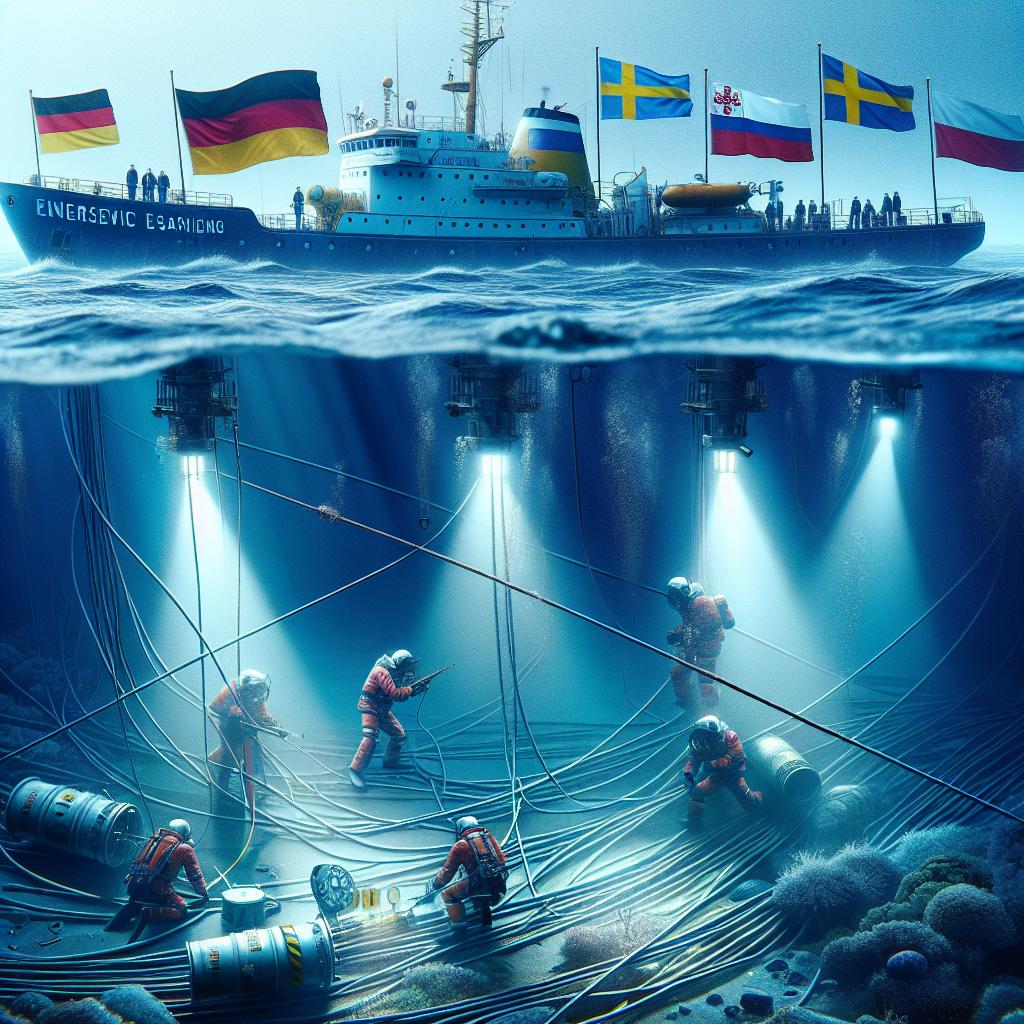Recently, two communication cables in the Baltic Sea were severed, sparking investigations by the governments of Germany, Sweden, Finland, and Lithuania. They are examining the role played by Chinese vessels in this incident. Analysts believe that if Beijing is found to be involved, the European Union may impose trade sanctions.
A submarine fiber-optic cable linking Sweden and Lithuania, as well as one connecting Finland and Germany, were unexpectedly cut. Investigations revealed that around the time the two fiber optic communication cables were severed, the Chinese vessel “Yi Peng 3” was passing through the area from Ust-Luga in Russia to Port Said in Egypt.
Germany’s Defense Minister stated that the deliberate damages to the two fiber optic cables within 24 hours cannot be ruled out as acts of “hybrid warfare.”
Over a year ago, a Chinese container ship flying the Hong Kong flag, “Newnew Polar Bear,” damaged a gas pipeline between Finland and Estonia.
In light of these incidents, Shen Mingshi, Director of the Institute of National Security at the National Defense and Security Research Institute in Taiwan, expressed suspicion towards Yi Peng 3, citing its presence in the vicinity as the only large vessel at that time. The vessel’s course and timing align with the disruption of the undersea fiber optic cables. He pointed out that China has a history of damaging cables, such as the undersea cable from Taiwan to Matsu being disrupted by Chinese fishing vessels, leading to communication interruptions.
Shen Mingshi also noted that while China has the capability to damage undersea cables, the likelihood of collaborating with Russia in causing these damages is higher. This pattern resembles China’s current military support to Russia, done indirectly and discreetly to evade scrutiny from the United States and Western countries.
According to Taiwan Strategic Studies Institute researcher Su Ziyun, retired US General Stiver mentioned that both China and Russia possess underwater drones which could be used for cable sabotage or interception. Further investigation is needed to inspect the vessels for equipment that could have caused the damage, such as anchors or other tools, as well as verifying the nationality of the crew. Social media reports indicated the ship had a Russian captain, yet this information remains unconfirmed.
Shen Mingshi pointed out the possible motives behind China’s actions, including causing chaos in European countries’ networks and communications, weakening their network resilience, especially among NATO countries supporting Ukraine. This incident could also serve to test the effectiveness of such gray zone operations and gauge European countries’ responses, potentially leading to division in their communication and defense cooperation.
While Chinese Foreign Ministry spokesperson Lin Jian responded by saying they were not aware of the situation and emphasized China’s requirement for strict compliance with relevant regulations to protect the safety of underwater infrastructure, reports from the Financial Times stated that the governments of Germany, Sweden, Finland, and Lithuania are conducting investigations and studying the role of Chinese vessels in this incident.
An OSINT account tracking Baltic Sea vessels, “auonsson,” shared on the social media platform X: “The ship suspected of damaging two communication cables in the Baltic Sea has been detained by the Danish Navy.” Prior to the detention, it was “anchored outside Danish territory with the Y311 SØLØVEN patrol/diving ship.”
Su Ziyun suggested that if it is confirmed that Beijing was behind both incidents of severing undersea cables in the Baltic Sea, the European Union might impose trade sanctions. Given that China currently holds nearly $270 billion in foreign exchange reserves controlled by the EU, this would be highly disadvantageous for Beijing.

